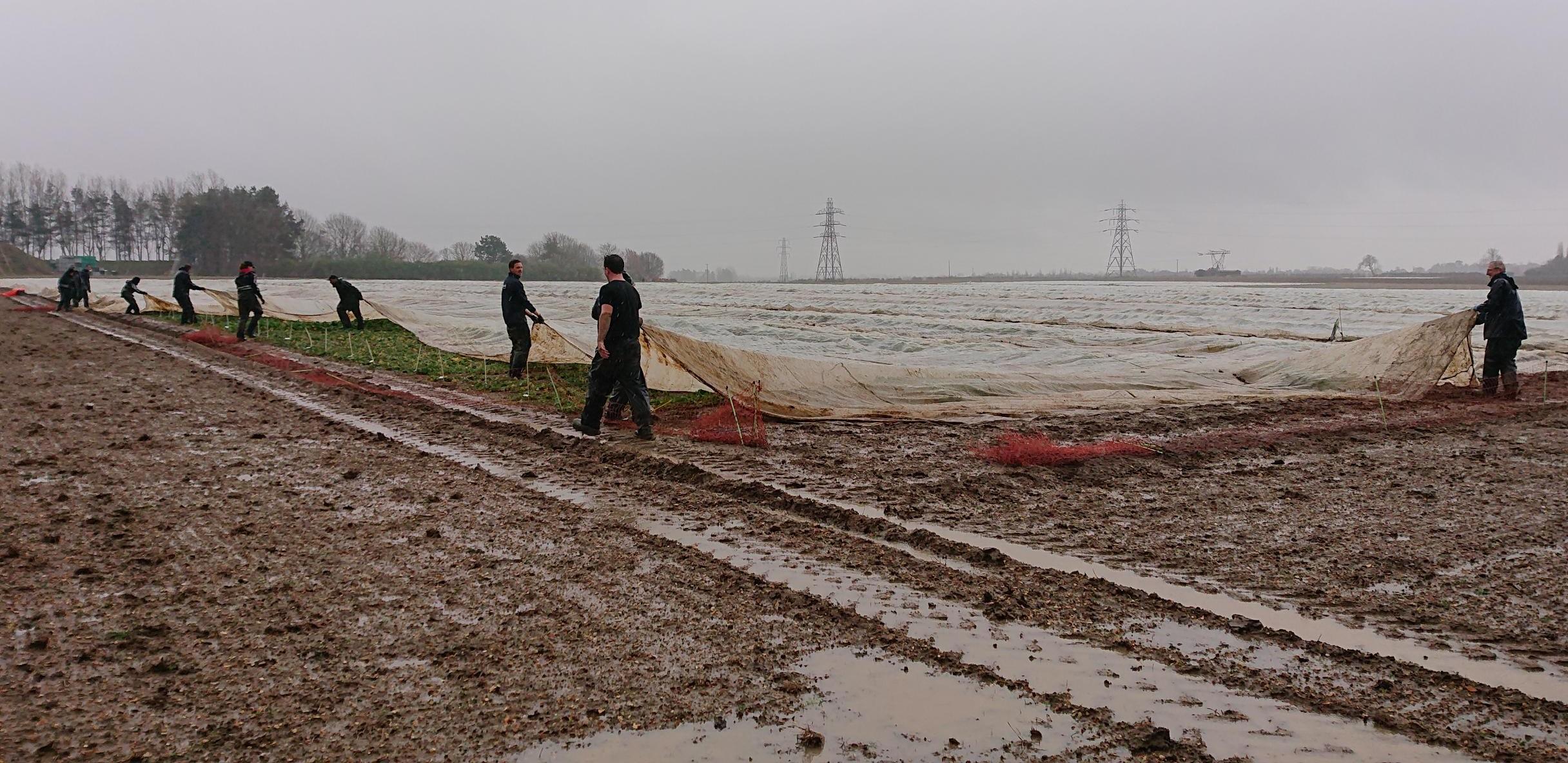
Submitted by K.L. Hlaba on Mon, 14/12/2020 - 14:26
In mid-March at NIAB, we found ourselves having to make the difficult preparations required for staying open while many organisations of a broadly similar remit were closing.
Of course, in contrast to universities we were not asked to close, but many similar research organisations took the arduous decision to effectively shut. It was apparent from day one that NIAB could not close, because this would place in jeopardy not only the organisation but much of the industry that NIAB serves. To close our doors would simply not have been in the public interest. It is of course important to note that we worked tirelessly to ensure that our staff were covid-safe, by converting government guidelines into process, often in under 24 hours. Most teams had to significantly reorganise their entire working patterns in order to ensure compliance, a change that continues into the present. However, operational efficiency and organisation aside, the reason that we could not close was because of the vital array of science and service that we provide to the industry. I have selected two (of many) examples to highlight this and some of the lessons that I have learned throughout the past year.
The first example is the work that we do in seed testing and certification. Around 275,000 tonnes of cereal seed alone are certified on behalf of the Animal and Plant Health Agency (APHA) by NIAB in any one year. Samples of these seed are grown and monitored at NIAB to ensure that the early generations of these seed meet the standards for varietal identity, purity, germination and cleanliness. Failure at any point in this system means that problems could rapidly spread through the seed system and be felt for multiple years. This was always going to be a difficult year for the seed trade (due to legal and policy changes), but the pandemic added a new challenge. NIAB had to step up and increase the number of its own inspections on behalf of APHA, as well as co-ordinate additional inspections carried out by the Plant Health and Seeds Inspectorate to compensate for problems others were having in the inspection system. Looking to the future and what we can learn from this challenging year, we see that there is potentially a much greater role for automation and digital services within this sector, and we are working to increase the connectivity of our statutory services with innovations in these disciplines. Having said that, at the core of this service are dedicated, highly skilled and selfless people who worked extraordinarily hard to make sure that NIAB delivered its role to industry and to the government. Investing in and valuing our staff has never been more prominent in my thoughts than now, and my lesson learned is never to forget that people imbued with a sense of purpose are our greatest asset.
The second example that I wish to highlight is our monitoring of pests and diseases. Every year NIAB, under contract to AHDB (that oversees the collection and disbursement of the levy on most primary producers), runs a cereal pathogen virulence survey (UKCPVS). This survey monitors rusts and mildews on cereal crops, and has done so for the last 50 years. Every year the UKCPVS requests samples of infected leaves showing signs of wheat yellow rust, brown rust and powdery mildew as well as barley powdery mildew. These infected leaves will give the team at NIAB the isolates needed to conduct the survey to identify any possible changes in the race of the diseases as soon as possible. The majority of samples are sent through in April, May, and June, which this year was both the peak of the rust and mildew season and the first peak of coronavirus cases. This survey provides valuable data on the real time evolution of these pathogens, allowing any resistance-breaking strains to be rapidly identified and resistance ratings of crops to be updated. Again, similar to my first example, the team running this survey had to pivot rapidly to new ways of working in order to ensure continuity of service, which they did. My lesson learnt from this experience is slightly different and highlights the need for resilient protocols. Many of the tests that are done are on plants themselves, challenging the plant with a pathogen isolate and observing the response. Although requiring great skill, these tests do not require access to molecular reagents, which have been affected by the disruptions experienced in the supply chain. Many molecular laboratories will know that supply chains for essential molecular reagents are extremely stretched at present due to the surge in demand for laboratory reagents for COVID-19 testing. The fact that this service couples both conventional pathotype tests with more sophisticated molecular ones means that whatever the larger disruption in the supply chain, valuable information can still be collected and disseminated. This is something we should always bear in mind when thinking about solutions in a global food security context; designing experiments which offer different, incremental levels of information, rather than relying on a single highly complex method, often leads to greater resilience, and is another important lesson learned.
Article by Dr Richard Harrison, Director of Cambridge Crop Research, NIAB, UK.
Image: Scientists at NIAB's facility in Cambridge netting plots to protect from bird damage. Supplied by Dr Richard Harrison.

